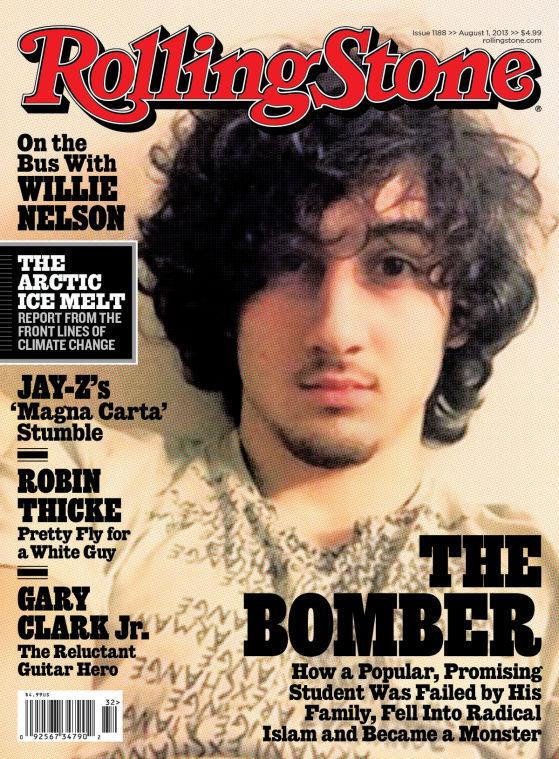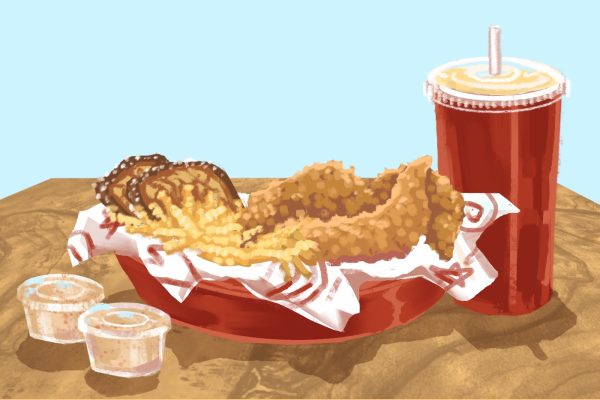The controversy created by Dzhokhar Tsarnaev’s cover photo in Rolling Stone magazine
In 1933, TIME magazine displayed a painting of Adolf Hitler on its cover.
In 1945, TIME Magazine featured Joseph Stalin, smiling with the title, “Man of the Year.”
In 1970, Rolling Stone received the National Magazine award on the story and cover of mass murderer Charles Manson: “The Incredible Story of the Most Dangerous Man Alive.”
Then, in 2013, Rolling Stone published an article and cover photograph of Dzhokhar Tsarnaev, a young man accused of planning the Boston Bombings that killed three people and injured 264 others.
All of these men committed terrible crimes, and most of us can agree they are not heroes.
I can assure you a magazine article is not going to change my mind. I do not consider most people on the front of magazines to be a hero. Brittany Spears is not my hero, nor is Brad Pitt.
Interestingly, Rolling Stone has received countless accusations that they are making Tsarnaev a “rock-star” and “hero.” Grocery stores, especially in Boston, are not selling the issue and social media have started groups such as the #boycottrollingstone page.
What part of the headline, “The Bomber: How a popular, promising student was failed by his family, fell into radical Islam and became a monster,” says he is a hero?
The difficult part is this: Where should the media draw the line between informing and protecting its readers? Will this cover and story prompt someone to follow in the footsteps of Tsarnaev or inform us of ways to prevent this behavior before it happens?
The fame of a person is determined by how society reacts to media, not the media itself. Rolling Stone had good intentions for its readers; they used pictures everyone has already seen in The New York Times, and society’s outrage is inconsistent and, therefore, unreliable.
Society is giving Tsarnaev more fame than the media by their constant trends on Facebook and Twitter. Now, people that usually don’t read Rolling Stone might consider reading it.
I am glad that I did see everyone’s opinions because I plan on reading it. Rolling Stone responded to the criticisms of its magazine by saying it has always published “serious and thoughtful coverage of important cultural and political issues.”
I feel like I need to know more about a man who threatened the safety of my country. I want to be ready and educated in case I am in a position to stop the next possible suspect.
Thirdly, Stefan Becket, who works for the New York Magazine, questioned the many negative responses about the photo, since it had already been used in a Sunday cover for The New York Times. All of the photos Rolling Stone used had already been played and replayed by the news.
Fourth, when magazine covers featured Adam Lanza (Sandy Hook shooter) or James Holmes (Auror, Colo. shooter) there was not the same level of attention, and no one threatened to boycott a magazine. It might be possible Tsarnaev’s religion played a factor, as much as we hate to admit, and that our society needs to take into account its unfair prejudice of Muslim people.
These are just some of my thoughts and opinions. I encourage you to disagree, but first you should read the story before you make your respected opinion.









Ruby lee • Sep 17, 2023 at 6:38 am
I want to know more about these insane people not to glorify them vut to be aware prevent a tragedy nobody speaks the names of r he men who killed Emmitt till Mamie and her son were awarded the president medal of freedom by president j.biden